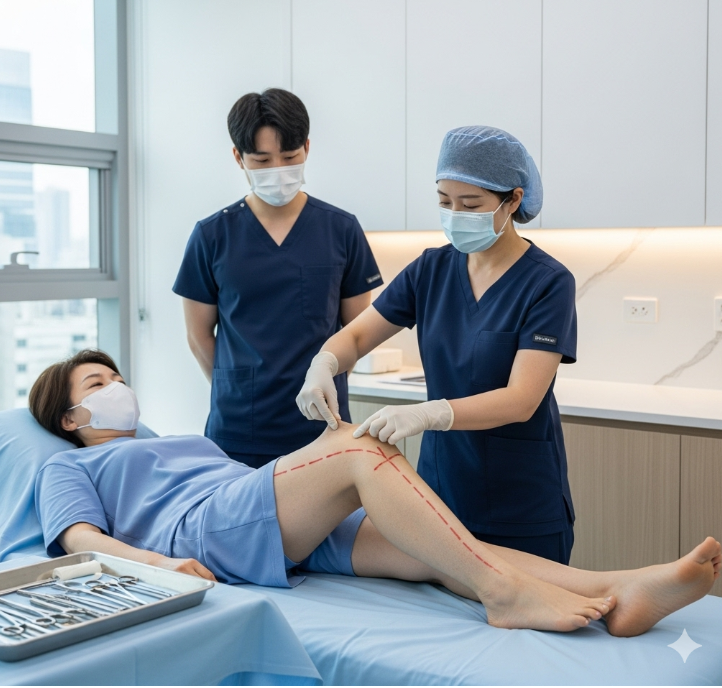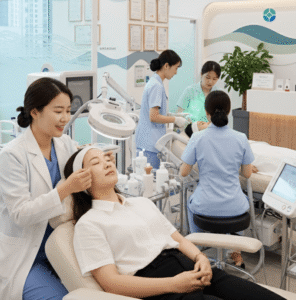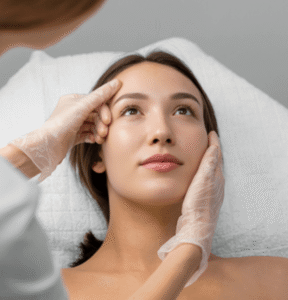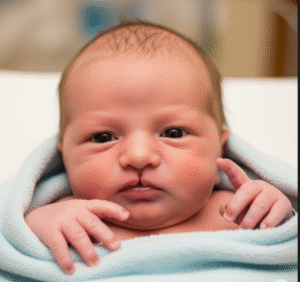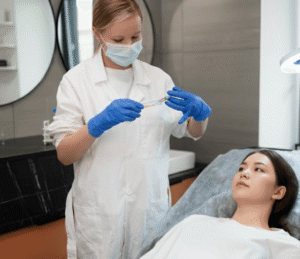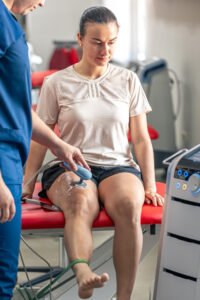What It Is
A knee skin lift is a cosmetic surgical procedure that removes excess, sagging skin around the knees, creating a smoother, firmer, and more youthful leg contour. This procedure is often performed on patients who have lost significant weight or whose skin has become loose due to aging. Unlike knee liposuction, which only removes fat, a knee skin lift directly addresses skin laxity.
The goal is to improve both the appearance and proportion of the legs, making the knees look slimmer, more defined, and balanced with the thighs and calves.
Why It’s Done
Patients choose a knee skin lift because:
- Loose skin around the knees makes the legs appear older or less toned.
- After major weight loss, skin folds create aesthetic and functional concerns.
- Clothing such as skirts, shorts, and fitted pants highlights sagging skin.
- Non-surgical treatments and exercise cannot tighten the excess skin.
Good candidates include:
- Men and women with excess skin but minimal fat around the knees.
- Patients at a stable weight with good overall health.
- Individuals with realistic expectations who understand scarring may occur near the knees.
Alternatives
- Knee liposuction: For patients with fat deposits but good skin elasticity.
- Non-surgical skin tightening: Radiofrequency or ultrasound devices may help mild laxity, but results are limited and temporary.
- Thigh lift: May be recommended if skin laxity extends beyond the knee into the thighs.
Preparation
Before a knee skin lift in Korea, patients will:
- Attend a consultation for assessment of skin elasticity and leg proportions.
- Undergo bloodwork and medical screening.
- Stop smoking and alcohol at least 4 weeks prior.
- Avoid blood thinners and certain supplements.
- Prepare for a recovery period of at least 1–2 weeks.
How It’s Done
- Anesthesia: Typically performed under general anesthesia or local anesthesia with sedation.
- Incision: Small incisions are made above or beside the knee, strategically placed within natural creases to minimize visible scarring.
- Skin removal: Excess skin is excised, and the remaining skin is tightened for a smoother appearance.
- Combination: Liposuction may be added if small fat deposits are also present.
- Duration: 1.5–2.5 hours, usually as an outpatient procedure.
Recovery
- First week: Swelling, bruising, and mild discomfort around the knees are expected. Pain is manageable with oral medication.
- Mobility: Walking is encouraged soon after surgery, though patients may feel stiffness when bending the knees.
- Compression garment: May be recommended for 3–4 weeks to control swelling.
- Return to work: Most patients resume light activities after 5–7 days.
- Exercise: Gentle stretching and walking are encouraged, while strenuous workouts should be avoided for 4–6 weeks.
- Results: Noticeable improvements appear within weeks, with final results visible after 2–3 months as scars soften and swelling subsides.
Possible Complications
- Bruising, swelling, or temporary numbness around the incision site.
- Visible scarring near the knees (though often hidden in natural folds).
- Delayed wound healing due to tension in the area.
- Rare but serious risks: infection, contour irregularities, or asymmetry.
Treatment Options in Korea
Diagnosis
Korean surgeons assess skin laxity, fat deposits, and overall leg proportions. Some clinics use 3D imaging to plan incisions and demonstrate expected results.
Medical Treatments
For patients with mild laxity, non-surgical tightening devices such as radiofrequency or ultrasound may be recommended. However, these are less effective for moderate to severe cases.
Surgical or Advanced Therapies
- Knee skin lift for patients with moderate to severe sagging.
- Combination with liposuction for those with both skin and fat issues.
- Extended thigh lift may be suggested if sagging extends into the thighs.
Rehabilitation and Support
- Follow-up visits to check incision healing and scar development.
- Scar management therapies such as silicone gels, laser, or microneedling.
- Physiotherapy and lymphatic drainage massage to reduce swelling.

